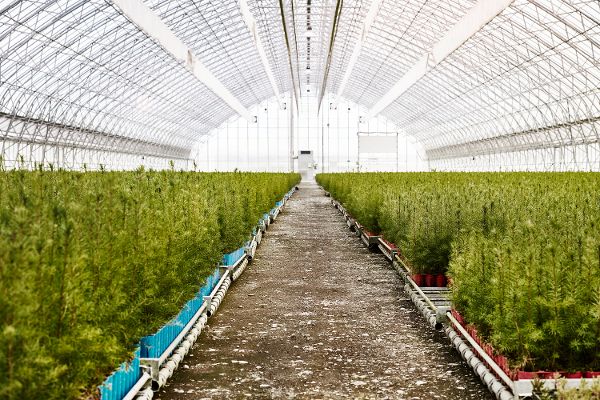What to do to make a forest climate-fit?

Knowing one’s forest, its features and needs is an important aspect of climate-fit management. Well-adapted silvicultural measures and efficient tending, useful in ecological and economic terms, are carried out. Also comprehensive knowledge about potential damaging factors is advantageous to allow rapid acting in case of an emergency.
Risk minimisation through monitoring
Each forest owner is legally obliged to carry out inspections at regular intervals in order to avoid long-term damage. With recurring forest inspections and early detection the probability that the right measures are taken increases. In this way the balanced diversity of forest ecosystems as well as forest yields are maintained in the long run.
Risk minimisation through diversity
As regards afforestations, one has to keep in mind that present altitude levels will shift upwards by several hundreds of metres. Mixed coniferous and deciduous forests are often in line with near-natural diversity and, in addition, minimise the risk for forest management. In deeper and medium zones one could focus on deciduous species like oak and beech. In areas where some regional tree species reach their limits due to the heat, Douglas fir from North America might help. It has proved successful in Europe for a hundred years, especially under dry conditions.
Forests which are the product of natural regeneration in most cases cope well with the conditions on their sites. The precondition is that the original stand, too, is adapted to future climatic conditions, contains but small quantities of “damaged wood” and no invasive species (such as, for example, tree of heaven). However, in planted coniferous forests the next generation of coniferous trees often originates from single old trees, which significantly reduces genetic diversity. Therefore, natural regeneration is useful only in combination with afforestation. The more balanced and diverse a forest is the better will it be able to cushion damage.
Risk minimisation through tending
Apart from damage caused by inevitable impacts of climate change, like storm or the weight of snow, there are some avoidable interventions that have adverse effects: It is important to avoid soil compaction by heavy harvesting machines and to take good care of tree roots. Another important measure to be taken is the protection against damage by game.
The crucial factor is to have sustainable structures which have a favourable effect both on the site and on the forest yield. This includes above all the preparation of a forest management plan with the help of experts. Orientation towards the natural forest community as regards the choice of tree species, natural regeneration where possible and useful - all of these are pillars of a practice of forest management which will be successful for the long term.
Risk minimisation through stability
In the course of their life trees will need more space to grow. If they have to share this space with their neighbours, they will start dying off because of the competitive pressure. In the course of thinning trees get sufficient space to allow the development of stable individual trees with strong root systems, thick trunks and symmetrical crowns. Stability is a factor to which special attention is paid in the management of forest areas. The taller trees are the more prone they are to windfall. Therefore, it is important to think about how old one’s forest should be and which trees “are allowed to become thick and tall”. It is also important that the canopy is not excessively dense because this ensures that an adequate amount of water reaches the ground and can provide sufficient humidity. Enough light will be available to the forest soil, which will have positive effects on the adapted vegetation of the soil layer. Mosses, shrubs and herbs are important indicators of intact and diverse forest habitats.
Why is it worthwhile?
- Stability: Trees need space to grow. Remove trunks regularly. This will make the forest healthier and improve its stability against wind breakage.
- Climate change mitigation: Trees store carbon. Carbon remains bound in timber products for a long time. Using wood is a contribution to climate protection.
How can I contribute actively?
Manage the forest in the best possible way
- Different tree species spread the risk of damage.
- Fewer trees means more space for the individual tree; this makes trees more stable.
- Too much game means damage to the forest.
- Climate change leads to a change in the distribution of tree species. Therefore: Take advantage of the benefits of natural regeneration and afforestation.
- Avoid damage to forest soils, tree roots, trunks and bark.
- Individual deadwood promotes the diversity of species. However, several trees dying suddenly are a warning signal.
Identify characteristic features of the forest
- Go to the forest and obtain an overview.
- Advice by experts.
- Exchange of experience with neighbours.
Make the forest fit for the future
- Optimal seed for your location.
- Accede to a forest owner cooperative or a forest association.
- Attend courses at the forestry training centres.
- Participate in excursions. The effects of forest management are illustrated there.
Links
- The independent information platform for forest seeds and seedlings in Austria (in German only) The independent information platform for forest seeds and seedlings in Austria (in German only)
- Climate-friendly forest portals (in German only) Climate-friendly forest portals (in German only)
- The most important information platform on the subject of forest and forestry (in German only) The most important information platform on the subject of forest and forestry (in German only)